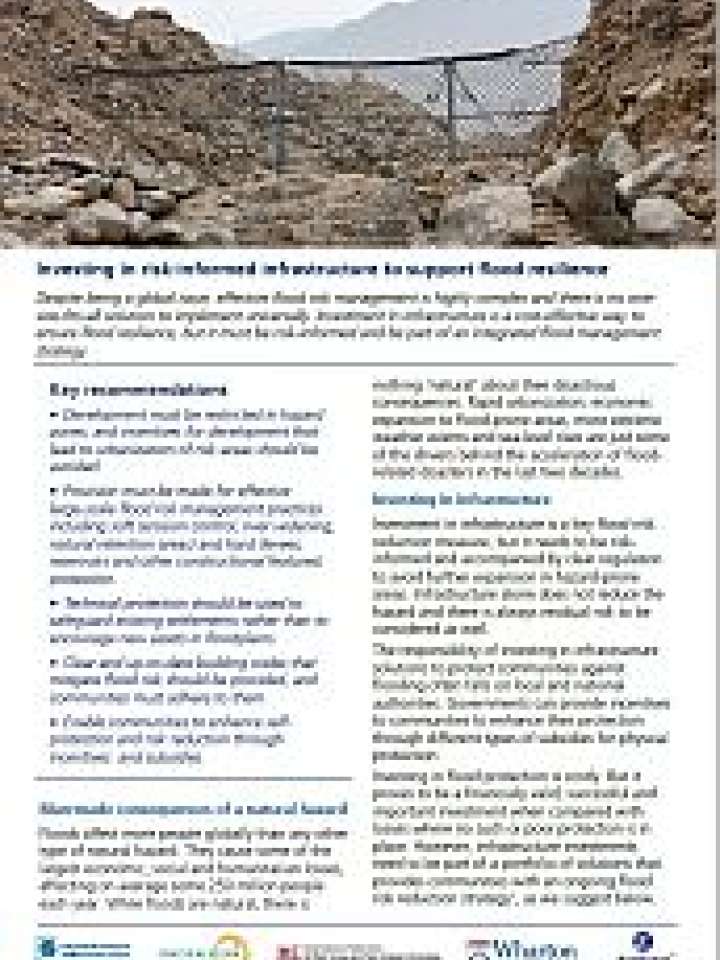Investing in risk-informed infrastructure to support flood resilience
This policy brief recommends investing in infrastructure as a cost-effective way to ensure flood resilience, but it must be risk-informed and be part of an integrated flood management strategy. Despite being a global issue, effective flood risk management is highly complex and there is no one-size-fits-all solution to implement universally.
Key recommendations
- Development must be restricted in hazard zones, and incentives for development that lead to urbanization of risk areas should be avoided.
- Provision must be made for effective large-scale flood risk management practices including soft (erosion control, river widening, natural retention areas) and hard (levees, reservoirs and other constructional features) protection.
- Technical protection should be used to safeguard existing settlements rather than to encourage new assets in floodplains.
- Clear and up-to-date building codes that mitigate flood risk should be provided, and communities must adhere to them.
- Enable communities to enhance self-protection and risk reduction through incentives and subsidies.
Also available in Spanish: Invertir en infraestructura que responda a los riesgos para fomentar la resiliencia ante las inundaciones
Explore further
